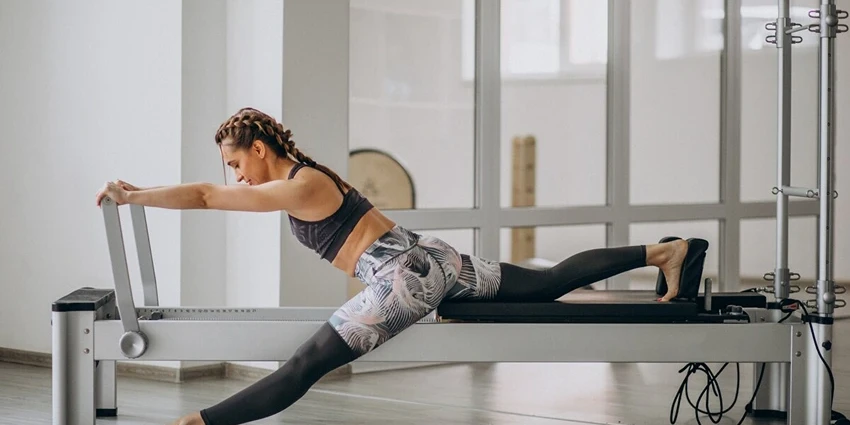Cardio workouts are essential for maintaining cardiovascular health, burning calories, and improving overall fitness. At Rac Women, we pride ourselves on being experts in the field, and we’ve curated the best cardio exercises for both gym and home settings. Let’s dive into the world of cardio and explore the benefits, types, and specific plans you can incorporate into your routine.
In This Article
Benefits of Cardio Workouts

Cardiovascular exercises offer a plethora of benefits:
- Calorie burning and weight management
- Enhanced cardiovascular fitness
- Improved VO2 max for better workout efficiency
- Reduced risk of chronic diseases
- Mood enhancement through endorphin release
- Boosted energy levels and better sleep
Types of Cardio Workouts
LISS (Low Intensity Steady State Cardio)
- Description: Prolonged exercises at a steady pace.
- Benefits: Great for beginners and those looking for a less strenuous workout.
- Examples:
- Walking
- Cycling
HIIT (High Intensity Interval Training)
- Description: Short bursts of high-intensity exercises followed by rest or low-intensity periods.
- Benefits: Efficient calorie burning in a shorter time.
- Examples:
- Sprinting
- Burpees

Cardio Workout Plans for the Gym
| Exercise | Description | Duration |
|---|---|---|
| Treadmill Intervals | Alternate between high-speed running and walking. | 20-30 mins |
| Rowing Intervals | Alternate between fast and slow rowing. | 20-30 mins |
| Concept Bike and Burpees | Cycle at a high intensity for a minute, followed by a minute of burpees. | 20-30 mins |
Cardio Workout Plans for Home
Home workouts offer flexibility and convenience. Here are some effective cardio exercises you can do at home, as sourced from Verywell Fit:
- Froggy Jumps: A high-intensity move to get your heart rate up. Jump up, tap your heels together, and land with bent knees.
- Burpees: A full-body exercise that involves a squat, jump to a push-up position, and then jump back up.
- Mountain Climbers: In a push-up position, bring your knees to your chest alternately.
- Squat Jumps: From a squat position, jump as high as you can.
- Jumping Jacks to a Step: A combination of jumping jacks and stepping onto a raised platform.
- Toe Taps With Jumps: Tap your toes to a raised platform while jumping to switch feet.
- Side to Side Jumping Lunges: Lunge to one side, jump up, and switch to lunge to the other side.
- Prisoner Squat Jumps: A squat jump with hands behind the head.
- Long Jumps: Jump forward as far as you can, landing with both feet.
- Plyo Jacks: A combination of jumping jacks and deep squats.
- Plyo Lunges: Jumping lunges without switching feet in the air.
- Jogging in Place: A simple way to get your heart rate up indoors.
- Jogging With High Knees: An intensified version of jogging in place with raised knees.
- Front Kick Lunge: Combine a front kick with a reverse lunge.
- Speed Skaters: Lateral jumps with a foot cross behind.
- Modified Mountain Climbers: A less intense version of mountain climbers with hands on a raised platform.
- Lunge Jumps: Lunge on one leg, jump up, and land back in the lunge.
- Speed Skaters With Weights: Lateral jumps while holding light weights.
- Jumping Jacks With Resistance Band Lat Pulls: Jumping jacks while pulling a resistance band down.

How Much Cardio Should You Do Each Week?
According to NHS recommendations, adults should aim for at least 150 minutes of moderate-intensity activity or 75 minutes of vigorous-intensity activity every week. It’s essential to balance cardio with strength training for a well-rounded fitness routine. Consistency is key to seeing results and improving cardiovascular health.
Cardio Workout Plans for Home
Working out at home has become increasingly popular, especially with the convenience and flexibility it offers. Here are some effective cardio exercises you can do at home:
| Exercise | Description | Duration |
|---|---|---|
| Froggy Jumps | A high-intensity move to get your heart rate up. Jump up, tap your heels together, and land with bent knees. | 1 min |
| Burpees | A full-body exercise that involves a squat, jump to a push-up position, and then jump back up. | 1 min |
| Mountain Climbers | In a push-up position, bring your knees to your chest alternately. | 1 min |
| Squat Jumps | From a squat position, jump as high as you can. | 1 min |
| Jumping Jacks to a Step | A combination of jumping jacks and stepping onto a raised platform. | 1 min |
| Toe Taps With Jumps | Tap your toes to a raised platform while jumping to switch feet. | 1 min |
How Much Cardio Should You Do Each Week?
According to NHS recommendations, adults should aim for at least 150 minutes of moderate-intensity activity or 75 minutes of vigorous-intensity activity every week. It’s essential to balance cardio with strength training for a well-rounded fitness routine. Consistency is key to seeing results and improving cardiovascular health.
| Intensity | Duration | Examples |
|---|---|---|
| Moderate | 150 minutes/week | Brisk walking, dancing |
| Vigorous | 75 minutes/week | Running, HIIT |
FAQs
According to LIVESTRONG, the duration of your cardio workout can vary based on your fitness goals. For general fitness, a structure might look like:
- Day 1: Moderate-intensity 45-minute cardio workout.
- Day 2: Easy-effort 20- to 30-minute cardio workout.
- Day 3: Moderate-intensity 45-minute cardio workout.
As mentioned on PureGym, there are two primary types of cardio workouts – LISS (low intensity steady state cardio) and HIIT (High Intensity Interval Training).
Yes, there are structured 8-week cardio plans available, like the one mentioned on The Fitness Phantom, which provides a detailed regimen for gym enthusiasts.
Ellen Crandall
Meet Ellen, your fitness compass in the world of athletics, training, and gym culture. With a commitment to well-being and a penchant for all things workout-related, Ellen is here to guide you on your journey to a healthier, fitter you. Join the fitness revolution, led by Ellen, and embrace the power of an active lifestyle.




